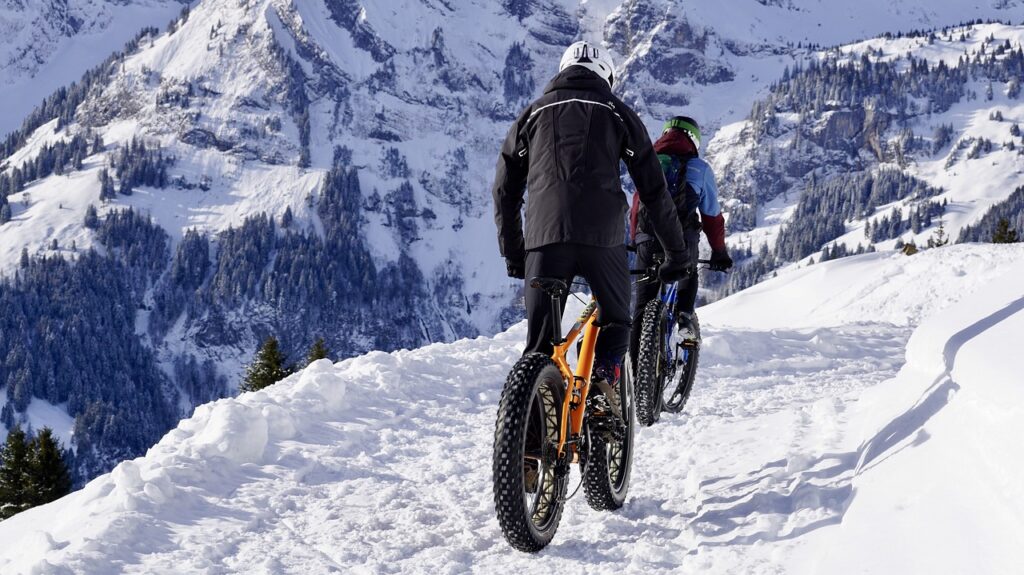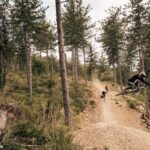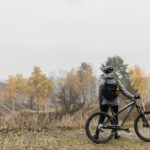Winter Mountain Biking: Essential Gear and Trail Recommendations
When winter rolls around, many cyclists stow their bikes away, convinced that cold weather means the end of their riding season. But for those adventurous souls willing to embrace the chill, winter mountain biking can be an exhilarating experience. With the right gear and trail knowledge, you can turn those cold, snowy days into epic rides. So, let’s dive into what you need to make the most of your winter biking adventures!
Essential Gear for Winter Mountain Biking
First and foremost, if you want to conquer the winter trails, you need to make sure you have the right gear. Here’s a breakdown of essentials you shouldn’t leave home without.
- Fat Bike: If you really want to enjoy winter rides, investing in a fat bike is a game-changer. These bikes have oversized tires that provide more traction and stability on snow and ice. I remember my first ride on a fat bike, and trust me, it was like riding on marshmallows!
- Tires: If a fat bike isn’t in your budget, consider getting winter-specific tires for your mountain bike. Look for tires with aggressive tread patterns and a good amount of knobby edges. Some riders even run their tires tubeless for lower pressure, which helps grip on slippery surfaces.
- Clothing: Staying warm is crucial. Wear moisture-wicking baselayers, insulating mid-layers, and a waterproof and breathable outer layer. Don’t forget your extremities! Insulated gloves, toe covers, and a good beanie under your helmet can keep you comfortable.
- Footwear: Choose shoes that are both warm and have good grip. There are winter cycling shoes out there, but if you don’t have those, wear thick wool socks combined with your favorite sturdy mountain biking shoes.
- Lights: Winter days can be short, and visibility is often reduced due to weather conditions. Front and rear lights are a must, even during the day. I recall a particularly foggy ride where my lights made the difference between enjoying the ride or feeling like a lost deer!
- Goggles or Glasses: Protect your eyes from wind, cold, and flying snow. Some styles are designed specifically for winter sports, with anti-fog features.
Gathering the right gear may seem daunting, but the joy of riding in snow-covered terrain makes it all worthwhile. Plus, who doesn’t love looking a little like an astronaut in their winter gear?
Layering Up: Finding the Right Balance
Layering is critical. Unlike traditional mountain biking, where you might sweat excess moisture, winter biking often means facing the risk of getting wet from snow. So, here’s a quick guideline:
- Baselayer: This layer should be snug and wick moisture. Merino wool is a great option, and its natural breathability beats synthetic materials.
- Insulating Layer: Fleece or down jackets work well here. It’s all about trapping body heat while allowing for movement. I once tried a puffy jacket that was so warm I could only cycle in it for about ten minutes before needing to shed layers.
- Outer Layer: This should be windproof and waterproof. Think of it as a protective shield from the chill. Look for something that you can easily throw on and take off.
It’s all about finding the right balance. You want to be warm, but if you sweat too much, you’ll end up cold once you stop. The struggle is real!
Bike Maintenance in the Winter
Winter conditions can be harsher on your bike than you might think. Snow, slush, and salt can wreak havoc on your drivetrain, so regular maintenance is key. Here’s a quick checklist:
- Frequent Cleaning: After each ride, make sure to clean your bike thoroughly. Mud and salt can cause corrosion, so it’s best to remove snow and dirt promptly.
- Lubrication: Use a wet-type lubricant because it’ll hold up better against winter elements. They’re made to resist wash-off from water.
- Tire Inspection: Regularly check your tires for wear and tear, especially in cold weather. You don’t want to be caught with a flat when the temperature dips!
Your bike is your trusty steed, so treat it right. Remember that good maintenance doesn’t just save it; it can save you from breakdowns in the middle of your ride.
Trail Recommendations for Epic Winter Rides
Now that you have your gear ready and your bike tuned up, let’s talk trails. Not all biking trails are suitable in winter, so here are some recommendations to get you started:
Local Parks and Forests
Check out your local parks and forest trails—some maintain winter biking routes. These trails may be groomed for fat biking or packed down by hikers, giving you a solid surface to ride on.
Mountain Resorts
In many regions, mountain resorts offer winter biking trails. Take advantage of their maintained trails and scenic views. It can feel incredibly refreshing to ride amidst the snow-covered peaks. If your area has a ski resort with a biking trail, do not miss that opportunity.
Community Events
Look for group rides or events in your area. Many biking communities host winter rides that cater to different skill levels. Plus, it’s a great way to meet new friends who share your love for winter biking!
Some of my best experiences came from joining local winter biking groups. One rain-soaked, muddy trail turned into a full-on snow day, and we ended up having way more fun than anticipated. Who knew snowball fights could be an unexpected bonus after a biking session?
Winter Biking Etiquette
As with any outdoor activity, respecting the trails and other users is important. Here are some gentle reminders:
- Stay on Marked Trails: This helps reduce damage to the landscape and supports trail maintenance efforts.
- Yield Properly: If you’re on a fat bike, yield to hikers and skiers, as they often have the right of way.
- Leave No Trace: Carry out what you carry in. Keeping our trails clean is essential for future generations!
It’s all about community spirit and creating a positive atmosphere on the trails. Plus, who wouldn’t want to make more biking friends? Always remember that a friendly wave or nod can go a long way!
Staying Safe on the Trails
With winter biking comes some unique risks. Here are a few safety tips to keep you safe out there:
- Check the Weather: Before heading out, always check the forecast. If conditions seem too harsh, consider postponing your ride.
- Ride with a Buddy: If possible, ride with someone else. In case of an accident or issue, it’s safer to have a friend along.
- Bring a Phone: Make sure to carry a fully charged phone in case of emergencies. It sounds obvious, but in the adrenaline of your ride, it’s easy to forget.
Safety may not sound as thrilling as the ride itself, but keeping these in mind can ensure more fun on the trails without hiccups.
Final Thoughts
Winter mountain biking is a fantastic way to embrace the colder months instead of retreating indoors. With the right gear, proper maintenance, and respect for the trails, every ride can be filled with joy and adventure. From the thrill of navigating snowy trails to the camaraderie shared with other bikers, winter biking opens up a whole new world of possibilities. Just remember that a bit of laughter and a good attitude can go a long way when the going gets tough.
So grab your gear, layer up, and get ready for some epic winter mountain biking. Whether you are a seasoned rider or just starting, the winter trails are calling your name!






